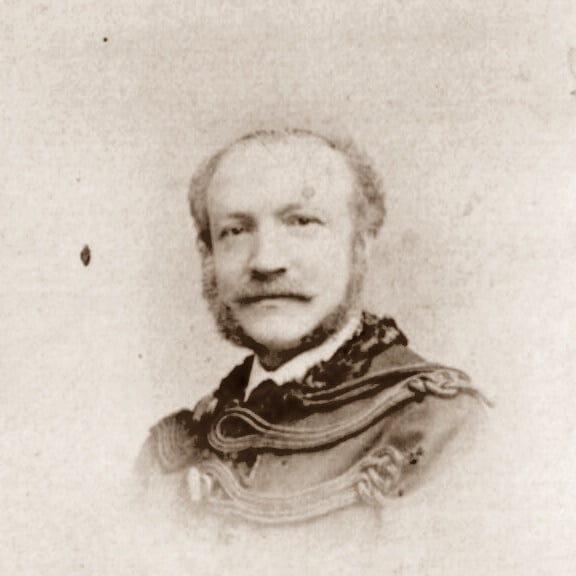
Who was Emile Pingat? If you’re a fashion enthusiast, his name might ring a bell. For those who haven’t heard of him, let’s dive into the world of Emile Pingat, a fashion designer whose elegance and innovation left an indelible mark on the fashion industry. Known for his impeccable taste and meticulous craftsmanship, Pingat’s contributions to haute couture are nothing short of legendary.
Table of Contents
Major Collections and Shows
Emile Pingat’s major collections and fashion shows were defining moments in his career, showcasing his mastery of couture and his ability to captivate the fashion world. His collections were renowned for their opulence, featuring luxurious fabrics like velvet, silk, and brocade, adorned with intricate embroidery and embellishments.
One of his most famous collections included his elaborate outerwear, particularly his ornate mantles and cloaks, which became his signature pieces. These garments were often showcased in private salons to an exclusive clientele, where Pingat’s attention to detail and craftsmanship were on full display.
His evening gowns, another highlight of his collections, were celebrated for their elegance and sophistication, often featuring dramatic silhouettes and rich color palettes. These pieces were regularly presented at high-society events and private fashion shows, where they drew admiration from the elite of Europe and America. Pingat’s collections were not just about fashion; they were a statement of luxury and refinement, solidifying his reputation as one of the leading couturiers of his time.
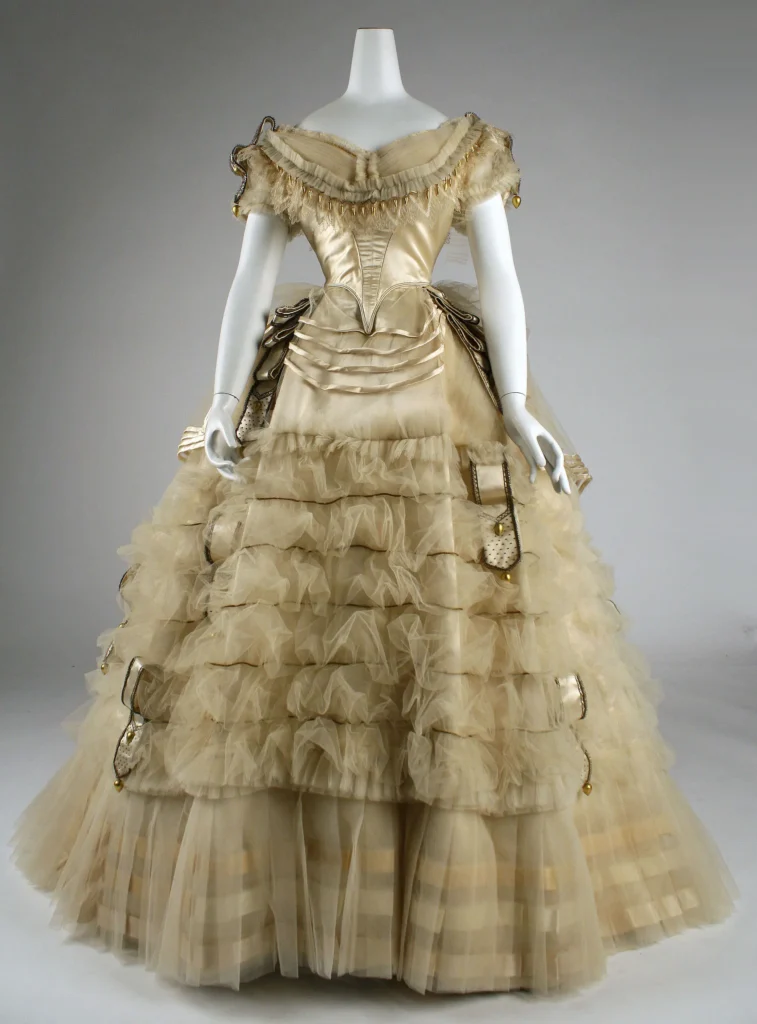
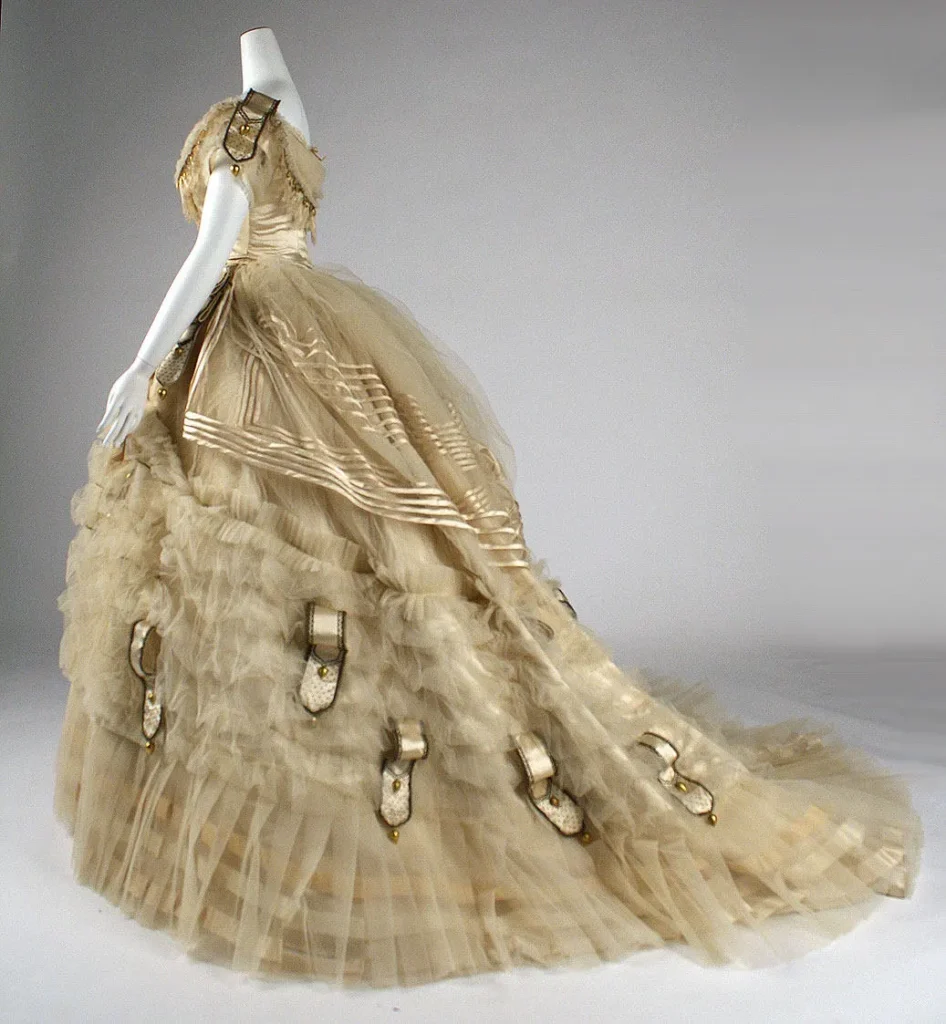
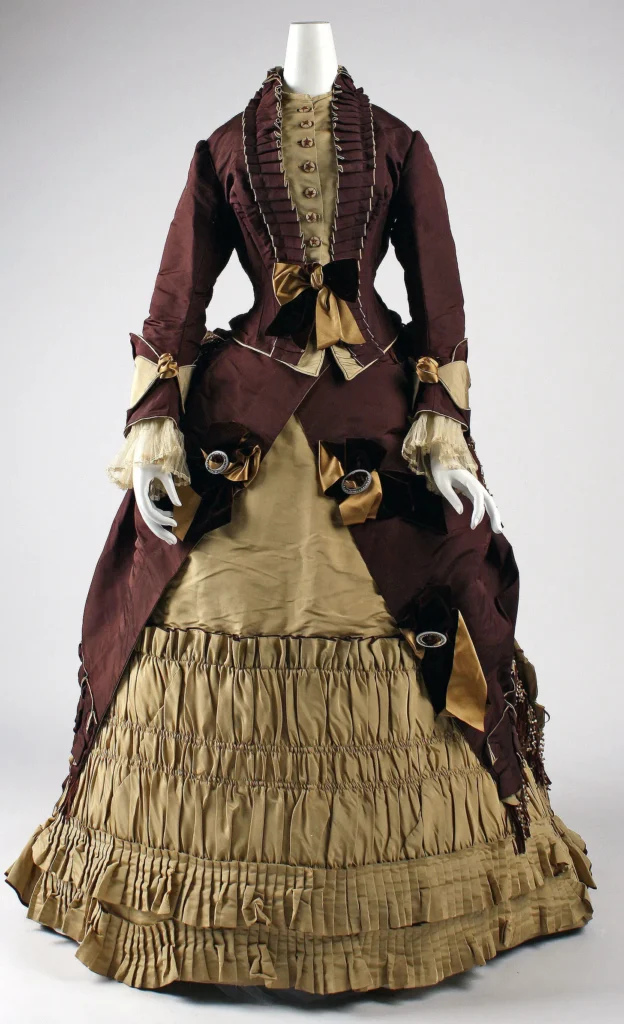
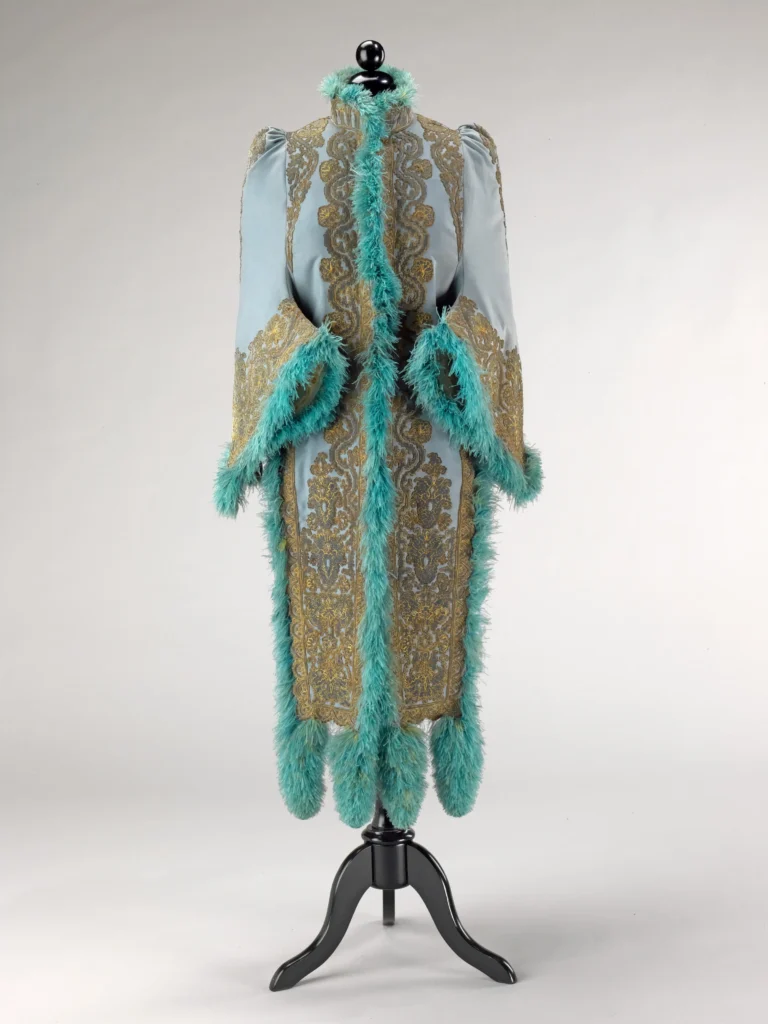
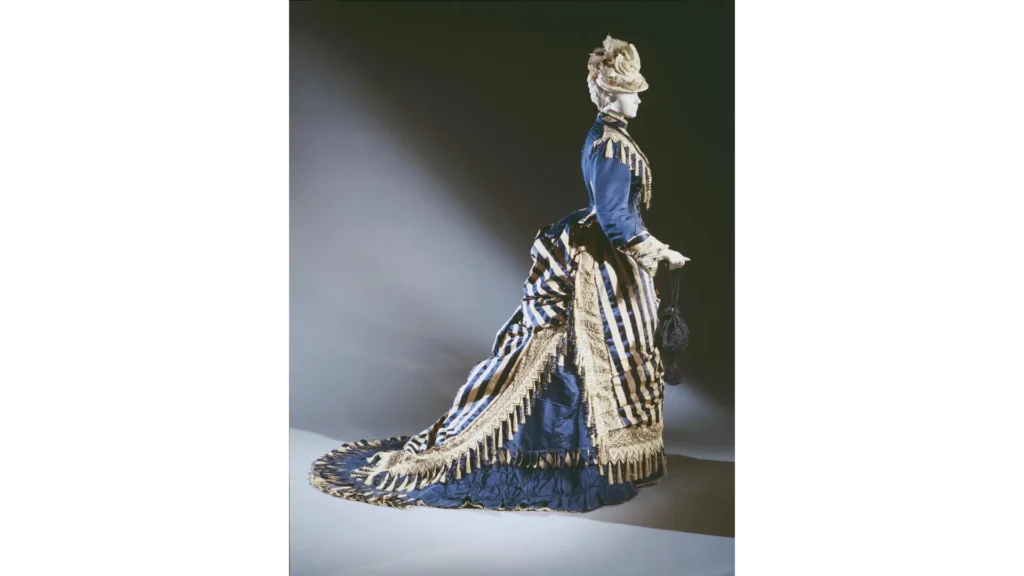
photo/metmuseum & philamuseum
Emile Pingat: At a Glance
| Aspect | Highlights |
|---|---|
| Who Was He? | Emile Pingat, a master of 19th-century French haute couture, known for his luxurious and ornate designs. |
| Place of Birth | Born in France, exact location unknown. |
| Date of Birth & Death | Born in 1820, passed away in 1901. |
| Signature Creations | Exquisite outerwear like mantles and cloaks, alongside elegant evening gowns that defined high society. |
| Famous Shop | His prestigious fashion house was located on Rue Louis-le-Grand in Paris, a hub of luxury and elegance. |
| Rivalries & Challenges | Battled it out with Charles Frederick Worth, faced financial strains, and juggled tradition with innovation. |
| Controversies | His intense rivalry with Worth and his reluctance to fully embrace modern fashion trends sparked debates. |
| Notable Titles | Recognized as one of the leading figures in Parisian haute couture, a title that rivaled even Worth. |
| Major Clients | Dressed European aristocracy and American socialites, including Empress Eugénie and wealthy New Yorkers. |
| Recognition & Accolades | Celebrated across Europe and America, his work graced top fashion magazines and was adored by the elite. |
| Major Collections | Showcased opulent collections in private salons, featuring luxurious fabrics, rich colors, and intricate details. |
| Legacy | A lasting icon of luxury and refinement, with a profound influence on the world of haute couture. |
Early Life and Background
Emile Pingat was born in 1820 in France. Coming from a family with a modest background, his early life didn’t hint at the illustrious career that awaited him. However, his keen interest in fabrics and design was apparent from a young age. Pingat was naturally drawn to the world of fashion, a passion that would soon blossom into a remarkable career.
Career Beginnings
Pingat’s journey into the fashion world began with humble apprenticeships. He honed his skills under the guidance of experienced designers, absorbing every bit of knowledge and technique he could. His dedication and talent did not go unnoticed, and he quickly made a name for himself in the competitive Parisian fashion scene.
Establishment of Fashion House
In 1864, Pingat took a significant step by establishing his own fashion house. This move marked the beginning of an era of breathtaking designs and innovative creations. His fashion house became synonymous with luxury and sophistication, attracting clients who sought the finest in haute couture.
Signature Styles and Innovations
Pingat’s designs were characterized by their intricate details and exquisite craftsmanship. He had a unique ability to blend traditional elements with contemporary flair, creating garments that were both timeless and modern. His use of luxurious fabrics, elaborate embroidery, and rich colors set his work apart from his contemporaries.
Clientele and Celebrity Influence
Pingat’s client list read like a who’s who of high society. From European aristocracy to American socialites, his designs were favored by those who desired exclusivity and refinement. His influence extended to celebrities of the time, making him a sought-after designer for red-carpet events and high-profile gatherings.
Contribution to Haute Couture
As a pioneer of haute couture, Pingat played a crucial role in shaping the standards of high fashion. His attention to detail and commitment to quality set a benchmark for future designers. He was instrumental in elevating fashion to an art form, where each garment was a masterpiece.
Collaborations and Partnerships
Pingat often collaborated with other renowned designers and artists, further enriching his work. These partnerships brought fresh perspectives and ideas, allowing Pingat to continually evolve and innovate. His collaborations were not just about business but were creative endeavors that pushed the boundaries of fashion.
Recognition and Awards
Emile Pingat received widespread recognition and numerous accolades throughout his career, solidifying his status as one of the foremost couturiers of his time. His fashion house was highly esteemed in Paris, and his designs were regularly featured in prestigious fashion magazines and exhibitions. Although the specific awards of that era were not as formally organized as they are today, Pingat was frequently honored by the fashion elite and his peers for his exceptional craftsmanship and innovative contributions to haute couture.
Challenges and Controversies
Emile Pingat faced several challenges throughout his career, including intense competition with other prominent designers like Charles Frederick Worth, financial pressures associated with maintaining a high-end fashion house in Paris, and the constant need to balance traditional couture with innovative trends. Additionally, he had to adapt to shifting client preferences as fashion evolved towards more functional styles while also striving to maintain his relevance in an ever-changing industry. Despite these obstacles, Pingat’s resilience and unwavering dedication to his craft solidified his legacy as a leading figure in haute couture.
The controversy centered around Pingat’s alleged reluctance to embrace the more modern, less formal styles that were emerging towards the end of the 19th century. Critics argued that Pingat was too rooted in traditional couture, which, while luxurious, was seen by some as out of touch with the evolving fashion landscape. This resistance to change was a point of contention and led to debates about his place in the future of fashion.
Also Read-Charles Frederick Worth: The Father of Haute Couture
Legacy and Impact
Pingat’s legacy lives on through the countless designers he inspired. His innovative techniques and timeless designs continue to influence modern fashion. The principles he established in haute couture remain a foundation for designers who strive for excellence and creativity.
Personal Life
Behind the scenes, Pingat was known for his modest and private nature. Despite his success, he remained dedicated to his craft, often working long hours to perfect his designs. His personal life was a balance of work and family, and he found solace in the simple joys outside of his demanding career.
End of Career and Death
As his career progressed, Pingat gracefully transitioned from the bustling fashion world to a quieter life. He remained involved in fashion until his final years, leaving behind a legacy that would be remembered for generations. Emile Pingat passed away in 1901, but his influence on fashion endures.
Conclusion
In the grand tapestry of fashion history, Emile Pingat’s name shines brightly. His dedication to craftsmanship, innovation, and elegance set a standard that continues to inspire designers today. From his early beginnings to his lasting legacy, Pingat’s journey is a testament to the power of creativity and passion in the world of fashion.
FAQs
1. Who was Emile Pingat? Emile Pingat was a renowned French fashion designer known for his contributions to haute couture in the 19th century.
2. What made Pingat’s designs unique? Pingat’s designs were characterized by their intricate details, luxurious fabrics, and a perfect blend of traditional and modern elements.
3. Who were some of Pingat’s notable clients? Pingat’s clients included European aristocracy, American socialites Mrs. William Carver, and celebrities of his time.
4. How did Pingat influence modern fashion? Pingat set high standards in haute couture, inspiring future designers with his innovative techniques and timeless designs.
5. What is Pingat’s legacy in the fashion industry? Pingat’s legacy lies in his contribution to the art of haute couture, influencing the standards and practices of high fashion that persist today.
One thought on “Emile Pingat: The Unsung Hero of Haute Couture”